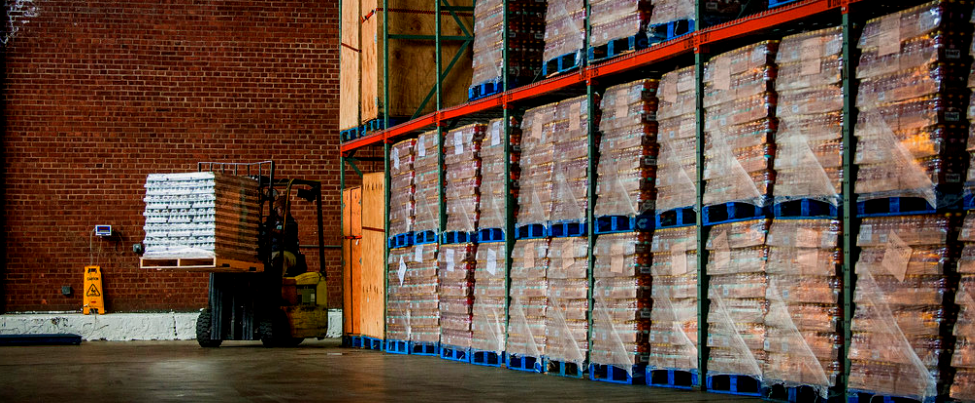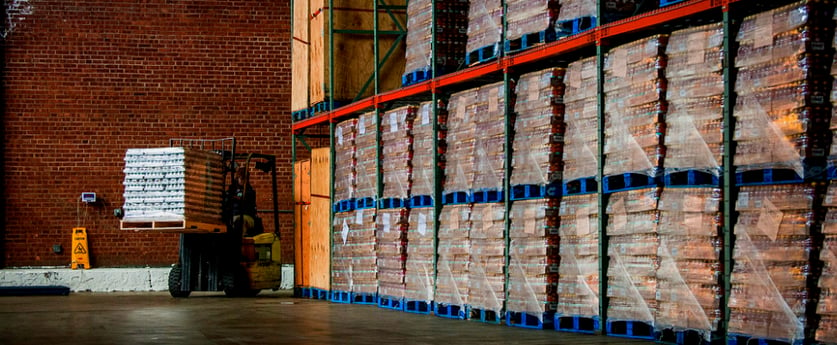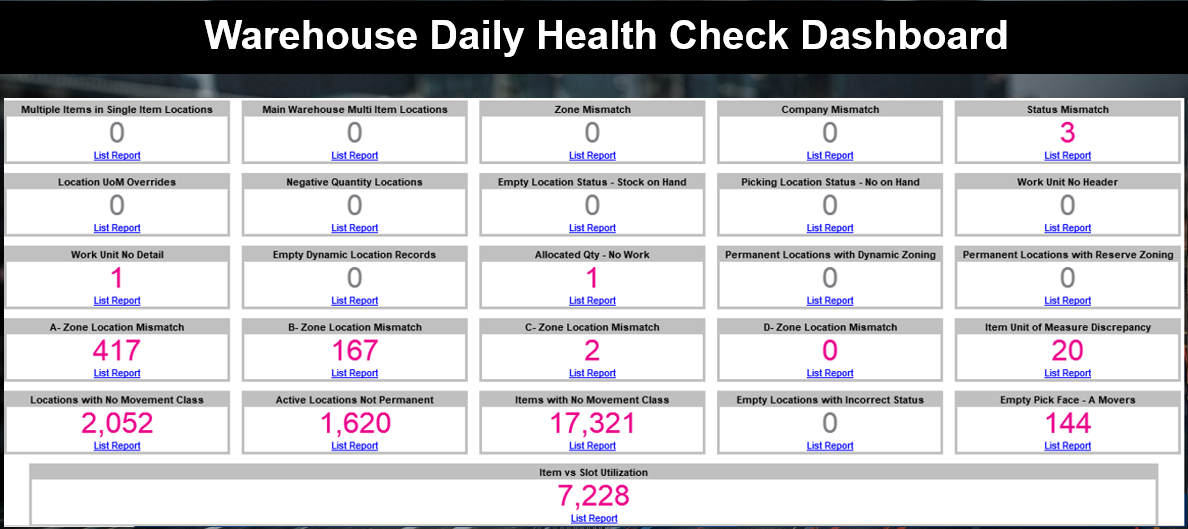The 13 warehouse best practices you should implement now


We’ve spent a large amount of time monitoring, optimising, and troubleshooting warehouse processes, in order to effectively build Warehouse Management Systems that provide measurable benefits to our clients.
This means that we’ve established a solid set of guiding principles and warehouse best practices that really make a difference. We share these tips and look at how a WMS can streamline the workload.
We understand that your workforce, your customers and orders, and your inventory lead to multiple functions and interactions in omnichannel warehouse management. These functions can keep your management teams so busy that growth, optimisation, and improvement is next-to-impossible.
Our recommendation? Start at the beginning, and then implement a WMS that reduces your team’s required input.
The warehouse management best practices you should focus on:
1. Vendor Compliance
We’ve discussed how a WMS can impact your supplier relationships, and enhancing your vendor, business, and distribution relationships can help to streamline your warehouse operations, reduce handling of your products, improve transportation service times and increase your customer satisfaction.
Aligning your product identification protocols and tracking processes give you transparency and uninhibited movement through the supply chain, and the standardisation of labeling and packaging can help to reduce errors between ports.
The aim? Run your warehouse efficiently and effectively to incentivise your supply partners to follow suit.
2. Advanced Shipping Notifications
Your “regular” shipping & receiving schedule may be hit by delays or disruption, resulting in inefficiency throughout your warehouse.
Implementing electronic advanced shipping notifications can mitigate these issues by reducing staffing shortages in labour planning, transportation service interruptions, and time wastage.
3. Data Collection Technology
Data Integrity is critical to ensuring a managed, accurate warehouse management process. Automation in your warehouse enables you to cut errors out of your data collection and analysis process.
RF barcode and RFID systems can assist you in the accurate and timeous logging of product movements and allows you to make informed decisions in a shorter timeframe.
4. Hands-Free Order Selection
A big part of your picking process is finding ways to accurately, efficiently run an order-selection process. More than just handheld scanners, you can now use wrist-mounted RF units, voice pick, pick-, or put-to-light order fulfilment tools which help improve turnaround and accelerate your picking process.
5. Wave Planning
Pre-planning your picking waves along the most efficient routes in your warehouse helps to reduce time expenditure and improve efficiency in labour and manpower, while also reducing your order processing times.
6. Recording your Stock Movement “Transactions”
Each step in the stock selection process should be recorded, monitored, and optimised. If steps cannot be recorded, or are found to be unnecessary, they can be removed or altered to optimise your warehouse better.
Turn-backs, or unnecessary steps in the process, reduce your order processing turnaround and reduce your efficiency, and should be monitored and eliminated as quickly as possible.
7. Minimising Touches
Reducing the number of times that stock must be extracted and packed into different containers or areas helps to improve how fast you can process your inbound or outbound orders.
A faster, more direct process will streamline your operations, improve your bottom line, and promote customer satisfaction through speedy order fulfillment.
8. Schedule Shipments Simultaneously
Multitasking is king:
If your warehouse has multiple dock setups, you can streamline offloading by scheduling simultaneous shipment arrivals. With reduced setup and breakdowns, your labour scheduling can be consolidated in certain timeframes, with improved timeliness and efficiency.
9. Ongoing Cycle Counting
Instead of doing a full physical inventory or stock take regularly, cycle counting can accurately gauge your inventory without the warehouse operations disruption of a full halt.
10. Cross-Docking
For companies who run LTL shipments and larger distribution centers that are strategically located for transferring shipments from one transportation route to another, cross-docking reduces your time expenditure by cutting out the time that products spend in the warehouse, allowing you to directly transfer them from one transport vehicle to another.
While this takes a significant investment to set up, it is worth it in the long run to keep your stock moving, warehouse space free, and labour unencumbered by unnecessary processes.
11. Dynamic Slotting
Slotting your warehouse based on demand allows you to slot dynamically rather than as a batch process, with picks placed by-product in one or more upcoming cycles or waves. These are set up to match transit time and shipping schedules, allowing for greater flexibility and efficiency in your picking process.
In addition to the technical warehouse best practices, it’s important to get back to basics and ensure you are working from a solid base:
12. The basic health of your warehouse.
Keeping an orderly warehouse starts with the very basic tracking, checking, and inventory monitoring in a daily health check.
Assessing your health against your warehouse KPIs will help you to keep the basics under control while you improve your operational processes.

Figure 1. The WMS health check dashboard that helps you to track and monitor your warehouse performance
These actions may seem obvious and unnecessary to your goal of optimising your warehouse to industry best-practices but can make or break the success of your business.
13. Health and Safety
Your WMS can help you to improve your Health and Safety processes. A focus on the safety of your employees, the security of goods, and the reduction of downtime owing to injury or illness can improve your productivity and efficiency immensely.
Assess the layout of your warehouse for improved layout, accessibility, and inspection, and you will improve productivity while also helping to reduce your work-related accidents, mishaps, and damage to goods.
In order to improve your warehouse management efficiency and profitability, the steps above are critical.
Measuring your success against industry benchmarks will help you to ensure you stay ahead of the technology curve:
DOWNLOAD “STEPS TO ENSURING YOUR WAREHOUSE COMPARES TO INDUSTRY BENCHMARKS”
TAGS
- WMS (51)
- Warehouse Best Practice (46)
- Implementing a WMS (29)
- Managing your warehouse (19)
- Omni Channel (18)
- eCommerce (18)
- Blog (16)
- Supply Chain Best Practice (16)
- Customer Journey (9)
- Mid-Level (8)
- Warehouse optimisation (7)
- General Tips (5)
- Industry General (5)
- Information (5)
- Trends (5)
- managing your Supply Chain (5)
- saudi arabia (5)
- Press Release (4)
- smart warehouse (4)
- 3PL (3)
- News (3)
- ERP (2)
- Entry-level (2)
- ROI (2)
- Case Study (1)
- OMS (1)
- Picking (1)
- Solution-Specific (1)
- Transport Management System (1)
Take A Look At The Results Of A Successful WMS Implementation.
See how Tarsus Distribution, in collaboration with SCJ boost overall efficiency by 60%




